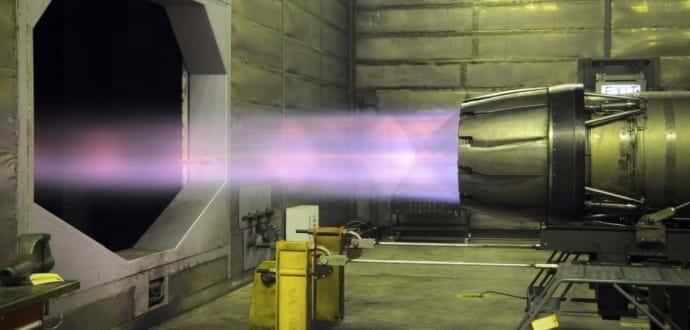Leaked NASA paper reveals mysterious microwave thruster is actually working
A source close to NASA Eagleworks has apparently leaked an early draft of NASA’s much-anticipated peer-reviewed paper on the controversial EM Drive space propulsion technology on the internet, which reveals that the controversial propulsion system actually works, and is capable of generating impressive thrust of 1.2 millinewtons per kilowatt in a vacuum, even after error measurements were accounted for.
The paper, was first leaked on a NASA Spaceflight enthusiast forum by an Australian EmDrive fan called Phil Wilson, , who goes by the username “The Traveller,” on November 5 before being taken down by Spaceflight’s moderators, as the paper has not yet been released. It is scheduled to be published by the American Institute of Aeronautics and Astronautics (AIAA) in December.
However, science-tech news site Next Big Future subsequently published the paper, which explains how early tests of the system in a vacuum, recreating the conditions of the engine if it were used in space.
For those unfamiliar, the EM Drive has made headlines over the past year, because it provides the incredible possibility of a fuel-free propulsion system that could possibly get us to Mars in just 70 days. However, there is one major problem: it shouldn’t work, according to the current laws of physics.
The proposed engine works by bouncing microwaves around inside an enclosed container, and the idea was first proposed by British researcher Roger Shawyer. Solar energy provides the electricity to power the microwaves, which means that no propellant is needed. However, several researchers said it was not possible.
Steven Thomson of the University of St. Andrews wrote, “The EM Drive is designed to be a closed system that doesn’t emit any particles or radiation. It cannot possibly generate any thrust without breaking some seriously fundamental laws of physics. To put it bluntly, it’s like trying to pull yourself up by your shoelaces and hoping you’ll levitate.”
The NASA Eagleworks team measured the EM Drive’s force using a low thrust pendulum at the Johnson Space Centre, and the engineers carried out controlled bursts at 40, 60 and 80 watts, reporting the thrust achieved in a vacuum was similar to the performance achieved in air.
“The test campaign included a null thrust test effort to identify any mundane sources of impulsive thrust, however none were identified,” the team, led by Harold White, concluded in the paper.
“Thrust data from forward, reverse, and null suggests that the system is consistently performing with a thrust to power ratio of 1.2 ± 0.1 millinewtons per kilowatt.”
The tests managed to generate 1.2 millinewtons per kilowatt (mN/Kw) of power, a fraction of the current state of the art Hall thruster, which can achieve a massive 60 mN/Kw.
However, the lack of fuel consumption could make up for the drop in power, the researchers say.
In the leaked paper, the researchers explain: “…for missions with very large delta-v requirements, having a propellant consumption rate of zero could offset the higher power requirements.”
Source: Sciencealert

